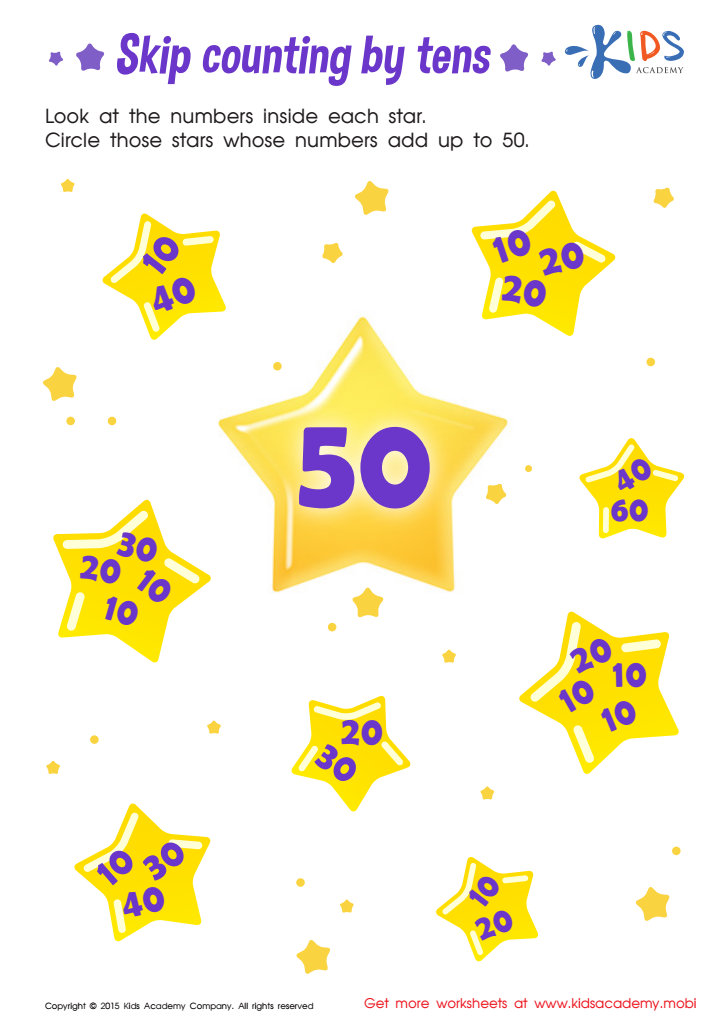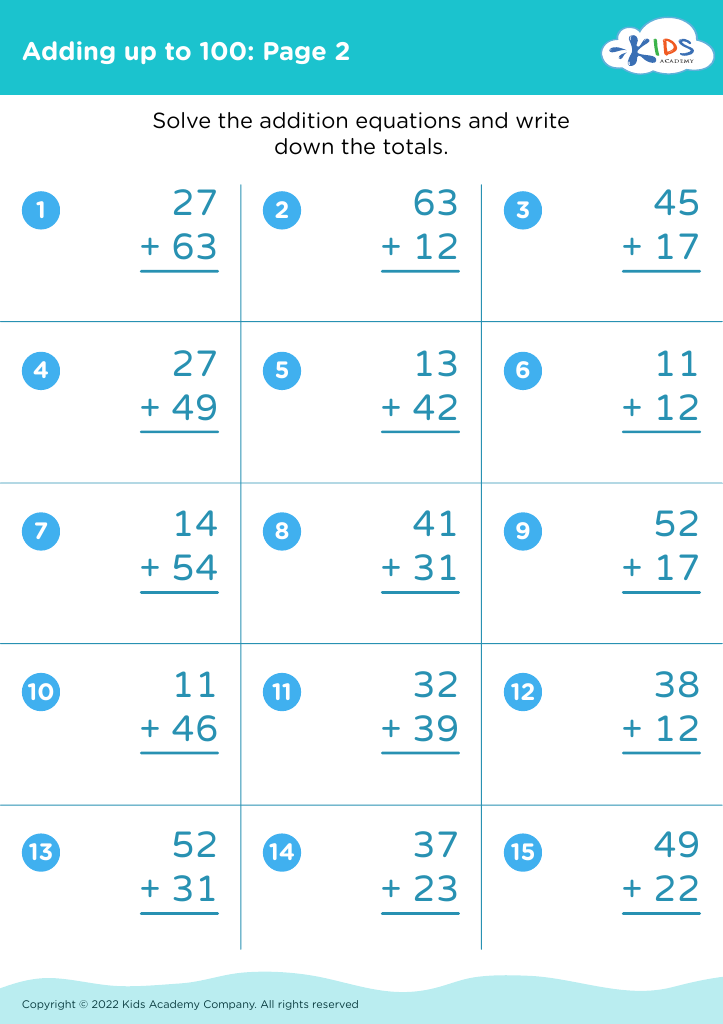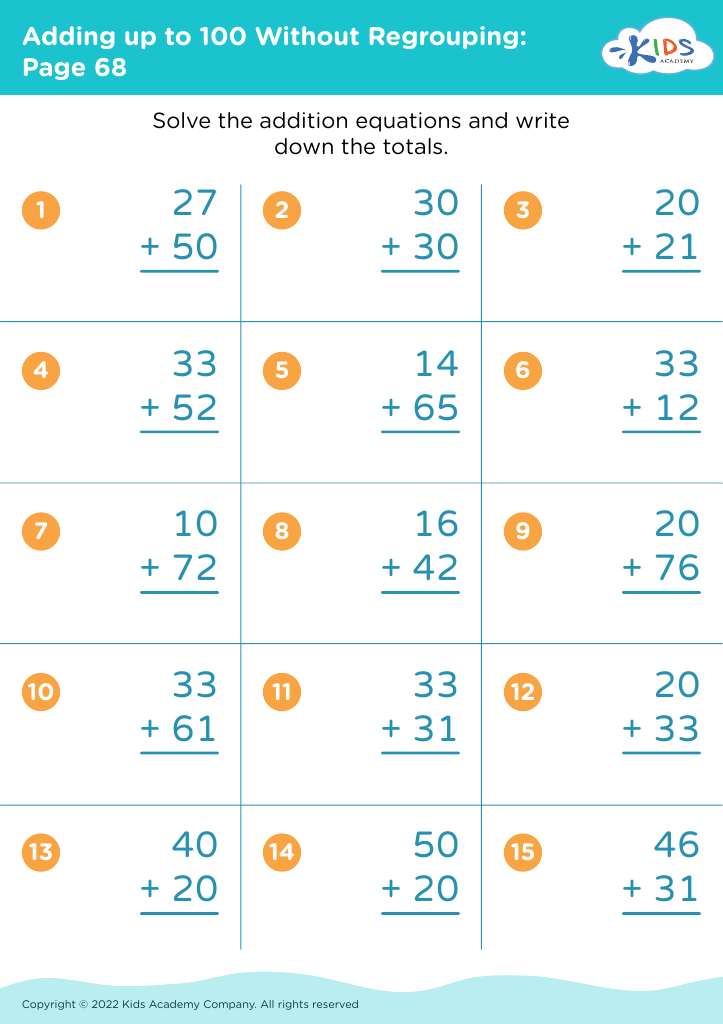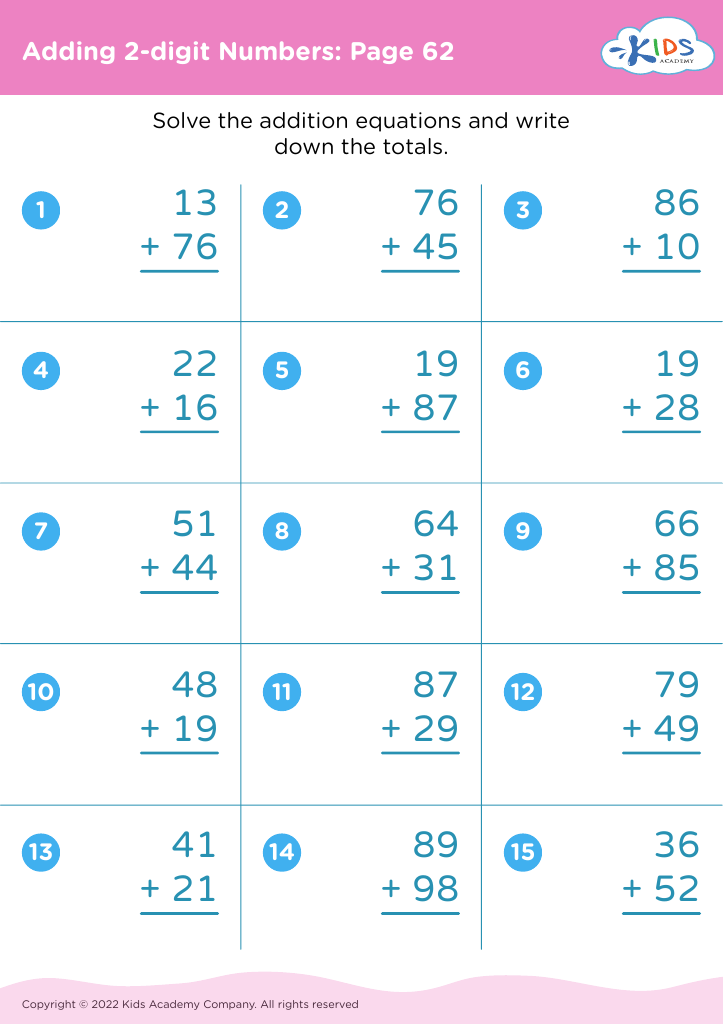Learning number patterns Worksheets for Ages 3-8
4 filtered results
-
From - To
Discover our engaging "Learning Number Patterns Worksheets" designed for children ages 3-8! These worksheets provide a fun and interactive way for young learners to develop essential math skills by recognizing and creating number patterns. Tailored to accommodate various learning levels, our worksheets incorporate colorful illustrations and game-like activities that capture children's attention. By fostering critical thinking and problem-solving abilities, these resources build a strong foundation for future math success. Perfect for home or classroom use, our worksheets stimulate curiosity and enhance cognitive development in an enjoyable way. Explore our collection now and help your child thrive in the world of numbers!


Learn Dozens: Skip Counting by Tens Printable
Learning number patterns is crucial for children aged 3-8 as it lays the groundwork for their mathematical understanding. Recognizing and understanding patterns not only enhances mathematical skills but also fosters critical thinking and problem-solving abilities. Children who grasp number patterns develop early arithmetic skills, such as addition and subtraction, by discerning relationships in numbers.
For parents and teachers, engaging children with patterns can stimulate their curiosity and promote a love for learning. Activities involving patterns, such as counting sequences or rhythmic patterns, can make mathematical concepts more tangible and enjoyable. This interaction fosters a strong foundation for future mathematical concepts such as multiplication and division, preparing children for more complex operations.
Moreover, pattern recognition is woven into daily life, from identifying rhythms in music to recognizing sequences in nature. Encouraging children to explore these connections helps them comprehend the world around them, enhancing their cognitive development. Importantly, learning through patterns supports emotional and social skills, promoting cooperative play and communication as children engage in pattern-related group activities. Thus, parents and teachers should invest in activities that cultivate number pattern recognition, as they are integral to a child’s overall growth and future academic success.




 Assign to My Students
Assign to My Students

















